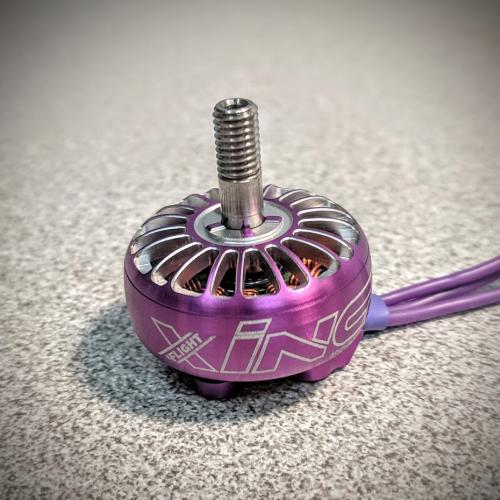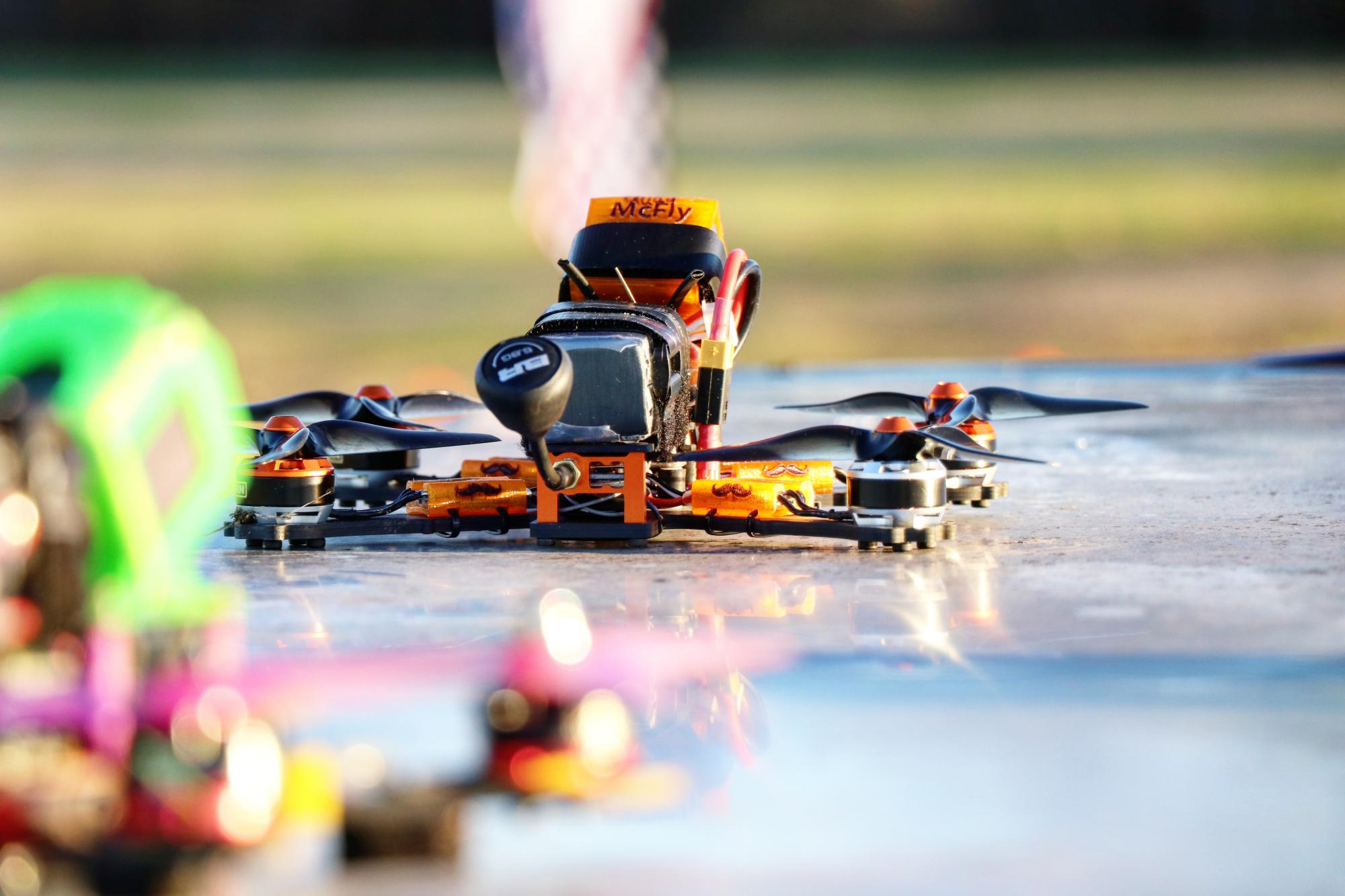The latest release from iFlight in the 2306 mid-kv range.
Check out the full list of motors in this series here
Summary
Published: Jan 21, 2019 by quadmcfly

| Tested KV: | 2350kv |
| Weight: | 30.9g |
| Stator W: | 23mm |
| Stator H: | 6mm |
iFlight has a fairly long history in the hobby, but has recently been making a name for themselves in the diversity of their offerings. We have tested several motors from iFlight in the past, but most of them have been fairly conservative in design and execution. This Xing motor is a dramatic turn for them in terms of both of these aspects. This motor is shooting for the top of the pile and they've done an amazing job integrating some excellent features. The motor includes all the usuals that we expect to see in today's market: single piece titanium alloy shaft with screw retention, open base design, 9x4x4 bearings, arc magnets with a miniscule air-gap, and thick single-wire winds.
There are however a couple of features that stand out. The primary feature is a damping ring between the top bearing in the motor and the underside of the bell. Theoretically this reduces the strain and impact to the bearing, which should increase the longevity. As a secondary this also prevents over-tightneing of the set screw, which will also have a positive impact on bearing life as well as reduce the risk of stressiong the motor due to increased friction and resulting higher current draw that results from over-tightening.
The second stand-out feature is an aluminum surround that covers the flux ring on the bell. This is largely cosemtic, but also increases the glue surface area to a part that provides the magnet retention lip to preven magnet slippage. It also is corrosioin and scratch resistant compared to the typical painted steel ring that has historically been used. Cosmetically it provides a striking accent as well. This is one of several recent motors to use this design technique, such as the
RCINPower's GTSv2 series as well as the EngineerX motors from BrotherHobby and the Karearea TOA motors.
There are a couple of additional features that deserve honorable mention in this design. The shaft retention screw is a 10.9 alloy M3 bolt with a 2mm hex drive, which is a welcome change from the M2.5 and 1.5mm hex drive we see in many other motors. It definitely reduces the risk of problems and makes it much easier to find a replacement. The other honorable mention is the textured area under the prop shaft, which uses a positive inflection pattern that makes prop grip much easier. As we've mentioned before this significantly reduces the strain and wear on the lock nut, as well as reducing the chances of slipping and loosening on impact.
Results
The most interesting point on the results here is that the KV tested a good bit lower than stated, coming in around 2350kv. This isn't necessarily a problem in itself, it just changes the ideal prop loading for the motor a bit. With that lower Kv point, this motor will definitely excel on heavy loaded, higher pitch 5" props, and even a good selection of 6" options. The results really reflect this, with the motor really coming into it's own on the 6" dual blade props, where it's pushing over 1700g of thrust at the top end of the props we tested. Overall this is a very well designed and extremely flexible motor, allowing a large range of performances accross various prop loadings, from solid response, performance and efficiency at the lighter 5" tri-blade props, to significant power delivery on the heavier props. This motor represents a huge positive step for iFlight.










































